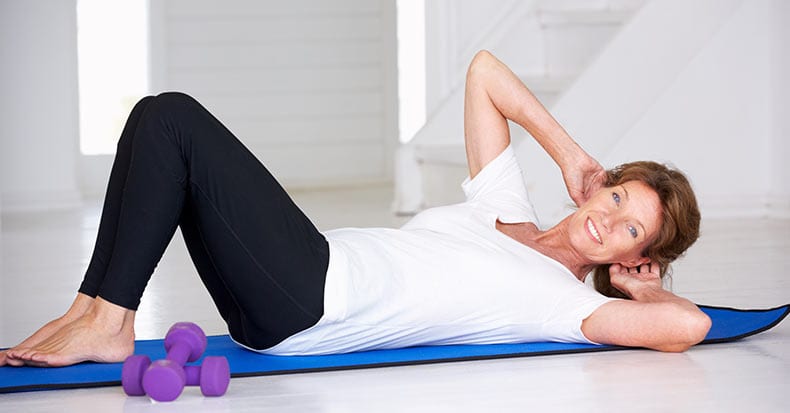Based on simple statistics, we’ve ALL had (or at least will have) some form of low back pain (LBP) at some point in our lives. The term “chronic” applies to LBP that’s been present for at least three months. It has been consistently reported that LBP becomes increasingly difficult to resolve when it persists for three or more months. This month's topic is about which exercises have been found to BEST address chronic low back pain (cLBP).
Many studies have investigated the effects of stabilization exercises in patients with chronic low back pain. In a review of six recently published studies that followed patients over a four to sixteen week time frame, investigators noted that participants who engaged in exercise (the use of a Swiss ball, floor or “land-based” exercises, sling exercises with some focusing on the abdominal muscles while others looked the extensors) reported improvements in pain and disability that were not seen among those in the non-exercise control groups. Additionally, one study also looked at changes in bone density between both groups and found increased bone density in the exercise group and a reduction in bone density among participants who refrained from exercise. Another study reported waist isometric strength increases in their exercise group.
One study found the cross section of the multifidus (MF) muscles—the deep low back, fine motor muscle groups that is considered to be one of the most important targets for low back strengthening—significantly increased after eight weeks of exercise. Another study observed the same effect for the deep transverse abdominis muscles.
These and other studies clearly show that core stabilization exercises can improve pain and disability scores in patients with cLBP, while those who do not exercise do not improve and in fact, may actually worsen! So, what are core stabilization exercises?
Here are some Swiss ball options (try 5-10 times and increase reps/hold times as you improve your strength):
1) Sitting pelvic tilts – This can be done with both feet (or eventually one foot when you're ready for an added challenge) on the floor while rocking the pelvis front to back, left to right, or in a circular or “figure-8” manner.
2) Bridge – Start sitting and then walk out so the ball is between the shoulder blades. Keep your trunk parallel to the floor. Push your heels into the floor to activate the hip extensors (buttock muscles) and then walk back up to a sitting position. You can further challenge your balance and hip extensor strength by raising one leg.
3) Sit-ups – Start sitting and roll halfway back and hold it for different lengths of time.
4) See-Saw – Hug the ball and roll out into a push up position. Position the ball under your pelvis and lift one leg at a time towards the ceiling. Alternate between the left and right legs. You can do BOTH legs together once you get used to this to make it more challenging.
There are MANY other Swiss ball exercises, but these are some good ones to start with. Next month, we’ll look at similar floor or land-based pelvic stabilization exercises!
